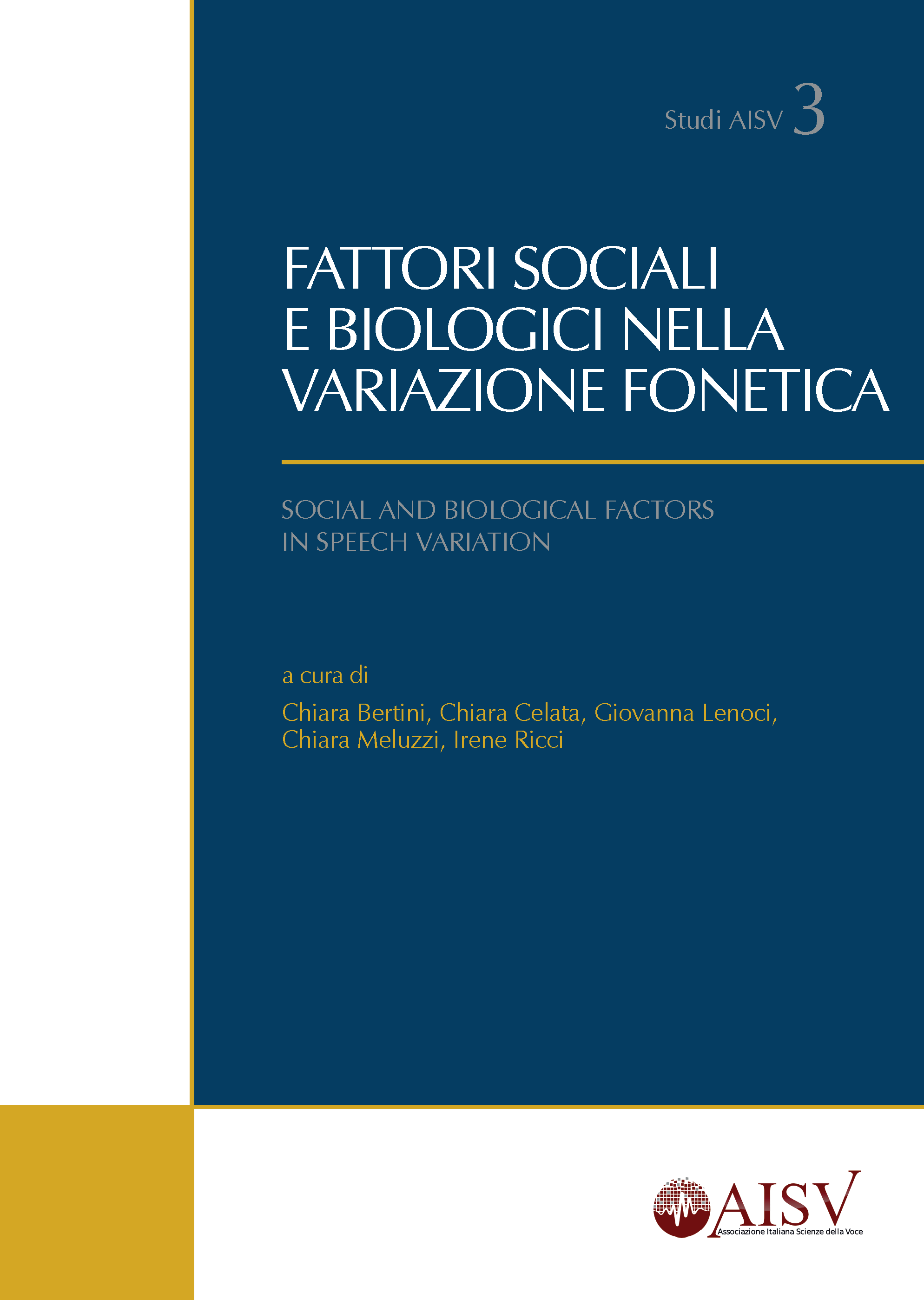Instability of speech production as a marker of Childhood Apraxia of Speech (CAS)
Segmental and acoustic evidence
DOI:
https://doi.org/10.17469/O2103AISV000017Keywords:
Childhood Apraxia of Speech (CAS), coarticulationAbstract
According to ASHA (2007), CAS is “a neurological childhood disorder in which the precision and consistency of movements underlying speech are impaired in the absence of neuromuscular deficits”. The present study aims to verify whether the extreme variability (at segmental as well as acoustic level) in the production of the very same linguistic unit (word or syllable) is a marker of CAS. We engaged three CAS subjects in multiple productions of the same linguistic units using the TFPI, a new phonetic test not yet published. Then we analyzed the recorded signals by means of different metrics, chosen among the most sensitive ones to track speech variability, in order to assess the consistency and stability of CAS subjects production. This was compared to that of the control groups, i.e. lexical age peers (calculated with the Italian version of MacArthur Communicative Development Inventories or CDI), chronological age peers and adults. The results suggest that CAS speech is characterized by phonological inconsistency, i.e., multiple productions of the same target very often do not share the same phonological form, especially with the longest words. Moreover, the analysis of intra-syllabic CV anticipatory coarticulation suggests that CAS children have an immature speech motor control, similar to that of 2- or 3-years-old children.
Downloads
Published
Issue
Section
License
Copyright (c) 2023 AISV - Associazione Italiana di Scienze della Voce [Italian Association for Speech Sciences]

This work is licensed under a Creative Commons Attribution-NonCommercial 4.0 International License.





